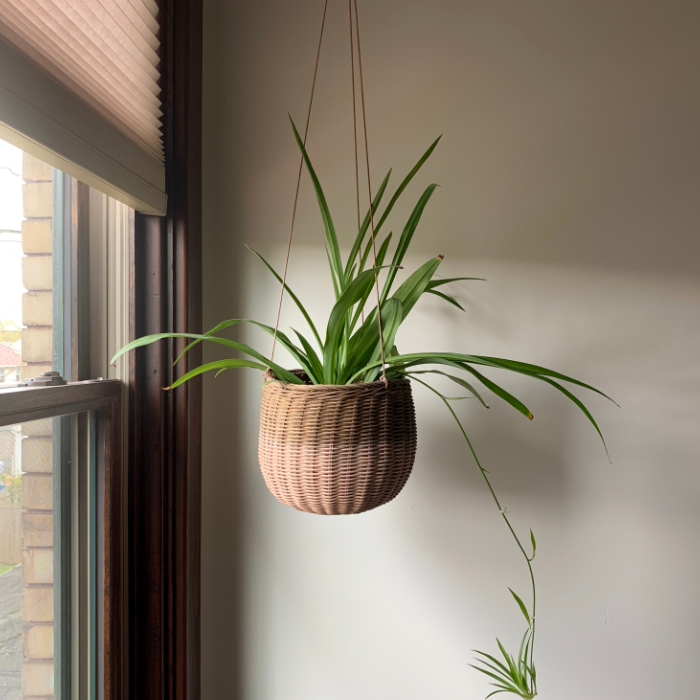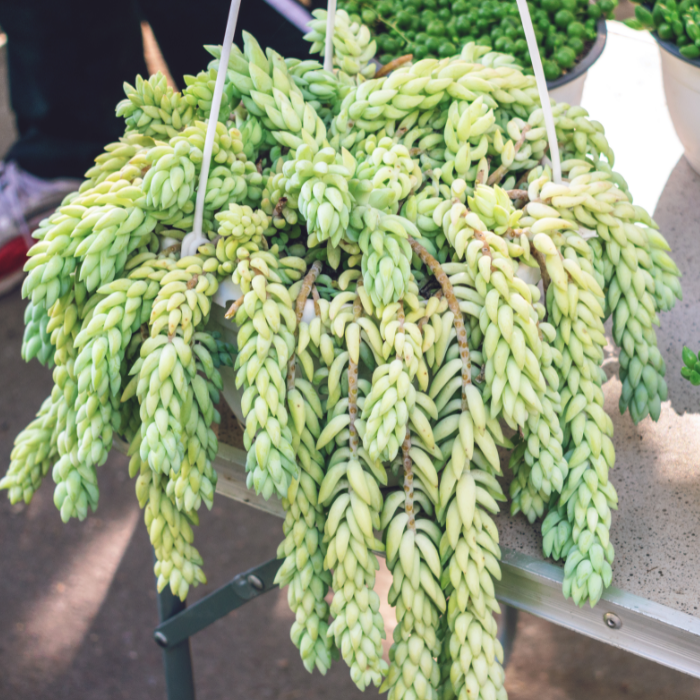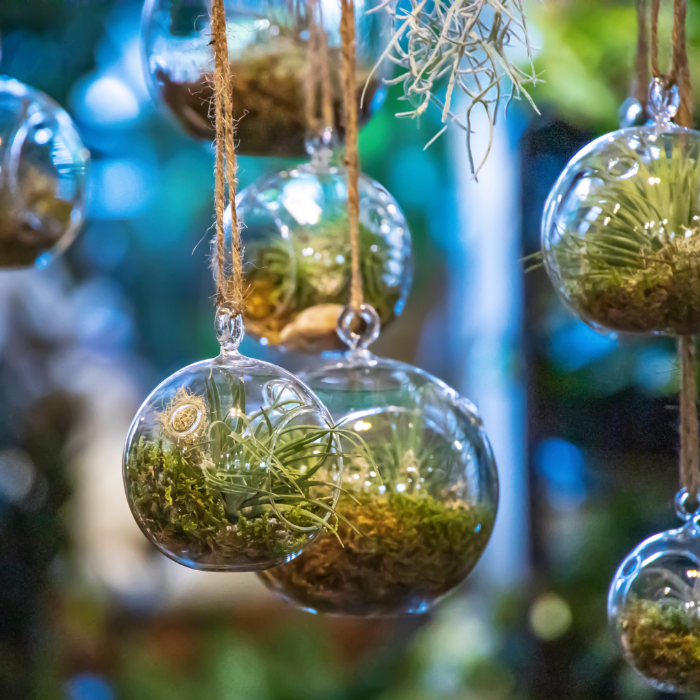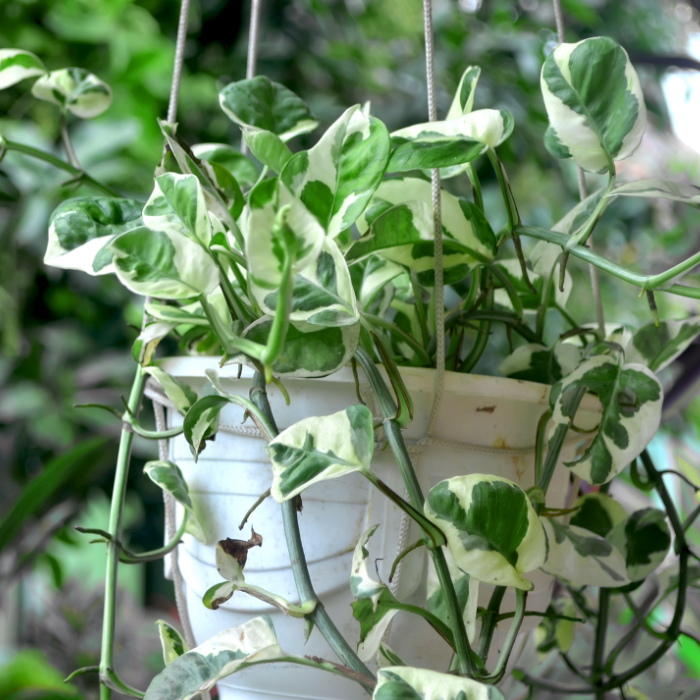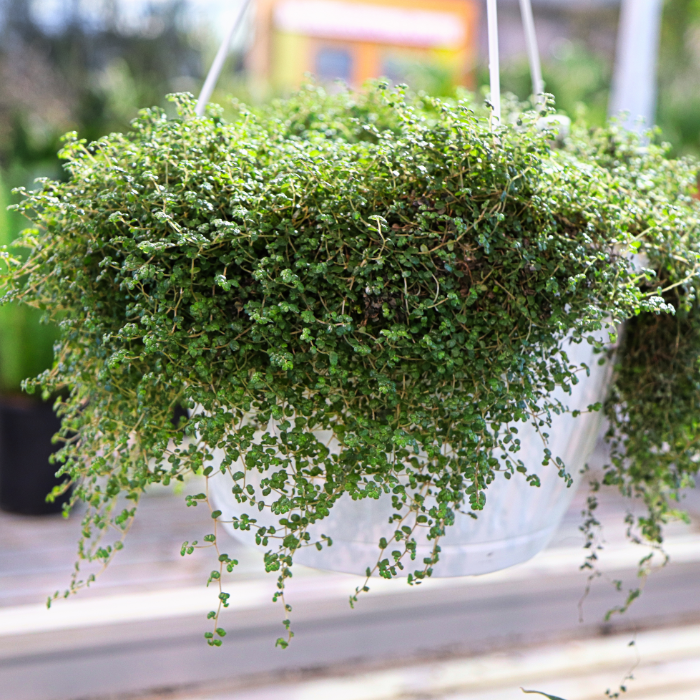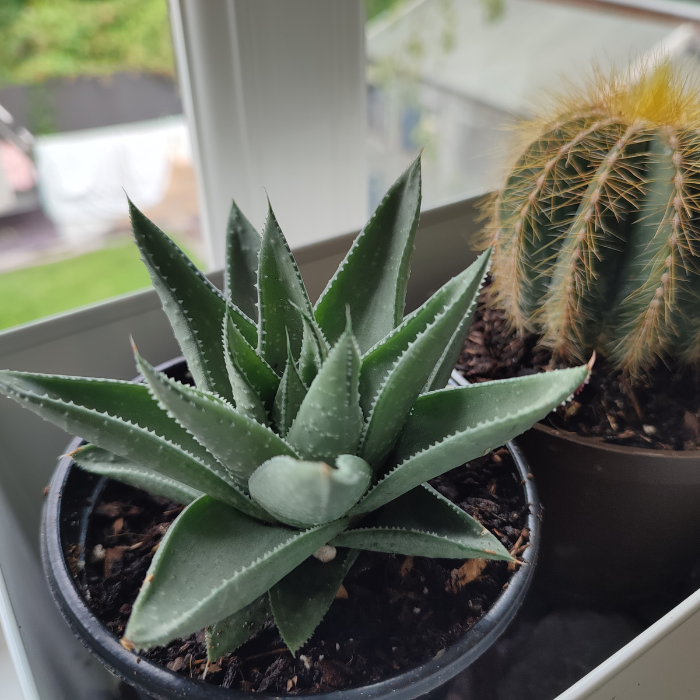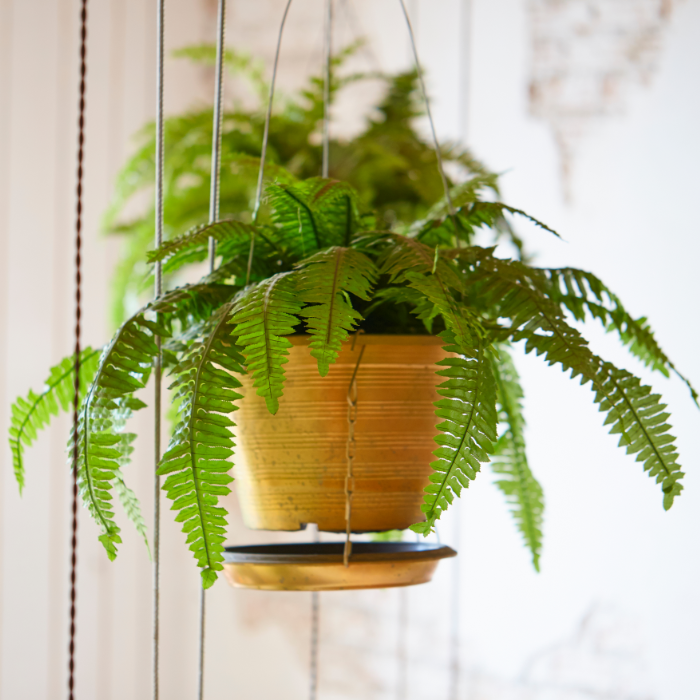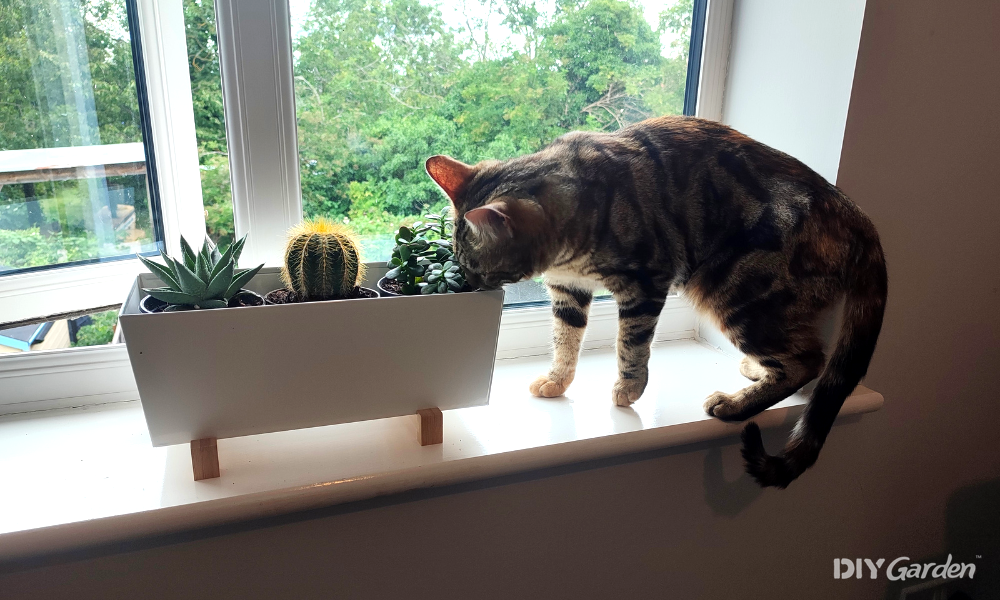
Are you a plant enthusiast with furry friends at home?
Then you know the challenge of finding the perfect houseplants that are both attractive and safe for your pets.
In this blog post, we’ll introduce you to 30 plants safe for dogs and cats, which are not only visually appealing but also approved by the ASPCA.
Choosing the Right Plants for Pet Owners
With so much misinformation out there, finding the right indoor plants that are safe for cats and dogs can be quite a task.
But worry not!
This ASPCA-approved guide is here to help you select non-toxic houseplants that are both beautiful and safe for your furry friends.
These plants cater to various lighting conditions and preferences, ensuring there’s something for every pet owner’s taste.
1. Spider Plant: A Safe Choice
One of the most popular houseplants among pet owners is the Spider Plant (Chlorophytum comosum).
Its unique, arching leaves and non-toxic nature make it an ideal choice for households with pets.
In addition, Spider Plants are known to purify the air by removing formaldehyde and xylene, making your home a healthier environment for both you and your pets.
These plants thrive in bright, indirect light and can even tolerate lower light conditions. Just let the soil dry out between waterings and watch your Spider Plant grow into a beautiful, pet-safe addition to your home.
2. African Violet: Vibrant and Velvety
The African Violet is a beautiful flowering plant known for its vibrant and velvety petals. It thrives indoors and brings elegance to any space.
Interestingly, African Violets come in a wide range of colours and can produce flowers throughout the year. So, if you’re a flower lover, this one’s for you!
What’s more, this plant is pet-safe, making it a great choice for homes with furry friends.
3. Burro’s Tail: A Succulent Solution
If you’re a fan of succulents but worry about their safety around your pets, Burro’s Tail is a fantastic solution.
This pet-safe succulent features cascading stems and fleshy, teardrop-shaped leaves that add beauty and texture to plant pot.
Not only is Burro’s Tail non-toxic to pets, but it’s also an air-purifying plant with medicinal properties.
Its drought-resistant nature makes it low-maintenance, too!
4. Air Plants: Soil-Free Safety
Air plants, also known as Tillandsias, are unique soil-free plants that are safe for pets and thrive in bright, indirect light.
These low-maintenance plants are ideal if you prefer to stick to greenery rather than flowers in your home.
Plus, the fact that they don’t need any soil makes them the prime choice for cat owners whose furry friends love to rummage in anything and everything!
To care for your air plants, simply soak them in water for 15-30 minutes every one to two weeks, depending on the heat and humidity. Let them dry completely, and place them back in their container.
5. Staghorn Fern: A Unique Display
For a truly unique and pet-safe plant, consider the Staghorn Fern.
This fascinating plant features flat, overlapping leaves that create an eye-catching display, making it a stunning focal point in any room.
To care for your Staghorn Fern, provide it with bright, indirect light and a combination of misting and watering.
With its distinctive appearance and pet-safe nature, the Staghorn Fern will impress both you and your furry friends.
6. Bamboo Palm: Tall and Graceful
The Bamboo Palm (Chamaedorea seifrizii) is a pet-safe indoor plant known for its graceful appearance.
Native to Mexico and Central America, this evergreen plant features slender, bamboo-like stems and delicate, arching fronds.
Beyond its aesthetic appeal, the Bamboo Palm is an efficient natural air filter, removing several toxins from the environment.
7. Hoya: Wax Plant Wonders
Hoya, also known as the wax plant, offers a pet-safe option for those who love plants with unique foliage.
This diverse genus boasts waxy leaves and is perfect for hanging baskets or other elevated displays.
Caring for your Hoya is simple – provide it with bright, indirect light and water it when the soil is dry.
These plants typically have a long lifespan. So if you look after them, they’ll stick around!
8. Lipstick Plant: Vibrant Blooms
Add a pop of colour to your pet-friendly plant collection with the Lipstick Plant.
This vibrant, non-toxic plant shows off lipstick-like blooms that are sure to catch the eye. It thrives in bright, indirect light and requires regular watering.
Keeping the Lipstick Plant around will give you peace of mind while enhancing your indoor space.
9. Lace Flower Vine: Delicate Beauty
For a delicate and pet-safe plant, consider the Lace Flower Vine (or Alsobia dianthiflora).
Its intricate foliage creates a beautiful, cascading effect that is a knock-out in a hanging basket or small pot.
And if its foliage weren’t enough, the Lace Flower Vine also produces small, bell-shaped blooms with a gorgeous fragrance. What’s not to love?
10. Baby Tears: Soft and Safe
Add a touch of softness and safety to your indoor garden with Baby Tears.
This attractive green perennial has petite, rounded leaves. It is ideal for small pots or hanging baskets.
Baby tears plants also keep the soil covered, potentially discouraging pets that like to dig around your houseplants, making it a practical and attractive choice.
11. Hens and Chickens: Resilient Rosette Shape
Hens and Chickens is a fascinating succulent plant popular for its unique rosette shape and pet-safe characteristics.
These hardy plants are native to mountainous regions and are incredibly resilient, with their thick leaves storing water for survival.
Hens and Chickens reproduce by producing smaller “chicks” around the main “hen” plant, creating an eye-catching display.
12. Polka Dot Plant: Colourful Addition
Brighten up your indoor garden with the colourful and pet-friendly Polka Dot Plant.
This eye-catching plant can grow up to 1 ft tall and prefers bright, indirect light. Its vibrant hues and pet-safe nature make it an ideal addition to any pet owner’s collection of houseplants.
However, there’s a limit to this plant’s non-toxicity. A little chewing is fine. But if your furry friend eats the lot, they may have a serious case of stomach upset!
13. Bromeliads: Tropical Touch
Bring the tropics into your home with pet-safe bromeliads.
Bromeliads are a unique family of diverse plants, with around 3,000 known species! They are native to the Americas and developed some fascinating adaptations as a result.
The most interesting is their water storage technique – the Bromeliad’s central rosette acts as a reservoir to collect water due to limited rainfall in its native region.
These exotic plants require bright light and a humid environment to thrive, making them a stunning addition to your indoor garden.
14. Purple Passion: Rich Hues
Add a touch of drama to your pet-friendly plant collection with Purple Passion or Gynura aurantiaca.
This richly-hued plant features soft, velvety leaves that are not only beautiful to look at but are edible, too!
Purple Passion is well-known for its slightly bitter taste, perfect for adding to the occasional salad or cooked as a vegetable.
This plant has also gained medicinal popularity over the last decades, as it’s believed to have anti-inflammatory and anti-microbial properties.
15. Moth Orchid: Exotic Elegance
Enhance your indoor garden with the exotic elegance of the Moth Orchid.
This pet-friendly plant boasts fragrant flowers that have a moth shape, hence the plant’s name. These plants can reach up to a foot tall, making them an impressive addition to any space.
If you’re into symbolism, you’ll love this little titbit: Moth Orchids are often associated with love, beauty, and luxury. So, they’re a great plant to have around if these values are important to you.
To care for your Moth Orchid, provide it with bright, indirect light and water it about once a week.
16. Bunny Ears Cactus: A Cactus with a Twist
The Bunny Ears Cactus is one of the best choices if you want a plant that captures attention with its unique appearance.
Also known as the Polka Dot Cactus, this plant has flattened, oval-shaped pads covered in soft, white spines resembling bunny ears.
This plant’s pet-safe nature makes it an ideal choice if you have curious cats or dogs in your household.
17. Rhipsalis: Cacti Alternative
If you love the look of cacti but worry about their safety around pets, Rhipsalis is a fantastic alternative.
Interestingly, this is typically an epiphytic plant in its native regions, Central and South America, the Caribbean, and parts of Africa. It’s found growing in trees. Hence, it makes the ideal hanging plant.
This pet-safe plant has unique, tumbling foliage and an interesting textured look. Who wouldn’t want this around?
To care for your Rhipsalis, place it in bright, indirect light and water it when the soil is dry.
18. String of Hearts: Trailing Romance
The String of Hearts plant is a highly popular houseplant. So much so that it has many different names all over the world. These include:
- Rosary Vine
- Sweetheart Vine
- Chin of Hearts
This plant will surely add romance to your indoor garden because its heart-shaped leaves cascade beautifully.
And beauty isn’t all this plant has got. It’s also a hardy, drought-tolerant plant that only needs infrequent watering.
When it comes to lighting, it’s not fussy! Place it in a sunny spot that receives indirect light or in a dimmer space, like a bathroom or office.
READ NEXT: 21 Best Plants for Rooms Without Windows
19. Watermelon Peperomia: Striking Patterns
What gave this plant its name, you may ask? Just take a look at its leaves! The patterning of the Watermelon Peperomia’s leaves quickly reminds us of the succulent fruit, the watermelon.
So, for a striking, pet-safe plant with patterned leaves, you can’t beat the Watermelon Peperomia.
This low-light-loving plant is the prime choice for adding decorative interest to your indoor garden while ensuring the safety of your pets.
Plus, it’s a compact plant, growing to a maximum height of 20 cm, making it ideal for plant lovers without much space to work with!
20. Zebra Plant
The Zebra Plant (Aphelandra squarrosa) is a captivating houseplant renowned for its striking foliage and vibrant yellow flower spikes.
With its distinct white veins contrasting against deep green leaves, it adds an exotic flare to any indoor space.
Not only is the Zebra Plant visually appealing, but it’s also safe for both cats and dogs. So you can enjoy its beauty with peace of mind!
21. Friendship Plant: Share the Love
Celebrate the bond between you and your friends and fellow plant lovers with the Friendship Plant.
Called the Friendship Plant for a reason, this plant is perfect for sharing with others due to its fast growth habit and easy propagation.
To propagate, simply select a healthy stem from the parent plant that has several leaves, and cut it off using a clean, sharp pair of scissors.
Or wait for your Friendship Plant to produce small offshoots (typically called “pups”) at its base.
Stem cuttings and pups quickly root in water, ready for you to plant in well-drained soil!
To care for your Friendship Plant, provide it with bright, indirect light and water it when the soil is dry – this will ensure it grows to its maximum potential.
22. Button Fern: Compact Greenery
If you’re looking for a pet-friendly fern to add some greenery to your home without taking up too much space, consider the Button Fern. No matter how lovingly you tend to it, it’ll only grow to 18 inches tall!
This compact plant’s fronds consist of small, round leaflets that resemble buttons, giving the plant a charming and distinctive appearance.
When it comes to the Button Fern, you have choice in abundance. Either use it as a standalone plant to draw the eye or combine it with other ferns or pet-safe houseplants for a truly spectacular display.
23. Haworthia: Aloe Vera Substitute
For those who love the look and benefits of an aloe vera plant but worry about its toxicity to pets, the Haworthia is a safe substitute.
This succulent-like plant is ideal for pet owners and offers similar benefits to Aloe Vera without the risks.
So far, all Haworthia varieties are considered safe for pets. So, you can go nuts with this one!
One of the best varieties in my eyes is the Haworthia Savanna, shown on my windowsill in the image above.
This Haworthia features a muted, pale green colour that I can’t resist! Plus, it’s perfectly safe for my cat!
READ MORE: 17 Plants That Look Like Aloe Vera
24. Pilea Silver Sparkle: Beginner’s Choice
If you’re new to the world of houseplants, the pet-safe Pilea Silver Sparkle is a great beginner’s choice.
This easy-to-care-for plant requires filtered light and moist soil. Other than that, it requires next to no care!
Often, many assume that low-maintenance plants aren’t that easy on the eyes. But this couldn’t be further from the truth for the Pilea Silver Sparkle!
It has small, rounded leaves with a distinctive silver-green colouration and a textured surface that resembles tiny metallic sparkles. It’ll sure add some glam to an indoor space that needs sprucing up!
25. Goldfish Plant: Quirky and Safe
The Goldfish Plant could be a quirky (plus pet-safe!) addition to your indoor garden.
Its unique, goldfish-shaped blooms make it a conversation starter and a fun choice for a shelf or large pot.
To care for your Goldfish Plant, provide it with bright, indirect light and water it regularly.
This charming, non-toxic plant addition is an excellent choice if you’re looking to add a touch of whimsy to your indoor space.
26. Swedish Ivy: Aromatic and Attractive
Swedish Ivy, also known as Creeping Charlie, is an aromatic and attractive hanging plant that is safe for pets. It has rounded leaves that cascade down its pot due to its lengthy stems, making it ideal for a hanging planter.
But despite what you may think, this plant isn’t officially classed as an Ivy – a plant that’s known for its toxicity. It’s actually a member of the Plectranthus genus, which includes various flowering plants.
However, it gained its name from its trailing and climbing growth habit.
Interestingly, this plant releases a fragrance when its leaves are crushed or brushed against. So be sure to put it somewhere within reach, and enjoy its minty, herbal scent whenever you are near!
27. Calathea
The Calathea gains its popularity (of which it has much) from its vibrant foliage and unique leaf movements.
Some of the best, most popular, pet-safe varieties of Calathea are:
- Calathea Orbifolia: This variety has large, round leaves with silver-green stripes that resemble delicate feathers.
- Calathea Lancifolia: Also known as the Rattlesnake Plant, this variety has long, lance-shaped leaves with dark green patterns resembling the skin of a rattlesnake.
- Calathea Medallion: Showcases broad, oval-shaped leaves with dark green patterns and a prominent pinkish-purple central vein.
But there are a lot more pet-safe Calathea varieties out there, so you’re bound to find one that suits your home’s style!
28. Prayer Plant: Foliage with Movement
The Prayer Plant’s leaves move throughout the day, creating a sense of movement and life within your home unlike any other.
Prayer plants come in various cultivars and hybrids, including striking variegated varieties, allowing you to find one with a beautiful colour combination.
This fascinating plant thrives in bright, indirect sunlight and requires watering when the soil is dry. To maintain its health, avoid exposing it to direct sunlight.
29. Boston Fern: A Lush Option
Looking to add a touch of greenery and texture to your home without compromising your pet’s safety?
Look no further than the Boston Fern.
This lush, pet-friendly fern thrives in humid environments and adds a beautiful touch to any space.
To keep your Boston Fern healthy and happy, provide it with indirect light, consistently moist soil, and plenty of humidity. The result will be a stunning, pet-safe plant that brings life and vibrancy to your home.
30. Venus Flytrap: Captivating Carnivore
The Venus Flytrap is a captivating carnivorous plant known for its unique ability to trap and consume insects.
It’s the ideal plant if you like to keep your doors open in the UK in summer. As I’m sure we all know, this can lead to unwanted flies entering our cosy homes.
With its jaw-like leaf lobes lined with sensitive trigger hairs, the plant snaps shut rapidly when triggered by unsuspecting prey.
But while this sounds unsafe for cats and dogs, it won’t harm them whatsoever! This plant is ASPCA-approved, making it a safe and intriguing addition to pet-friendly households!
Summary
Creating a pet-friendly indoor garden is not only possible but can also be a beautiful and rewarding experience.
With these 30 plants, you can enjoy the benefits of indoor greenery while ensuring the safety of your beloved pets.
Whether you’re a seasoned plant enthusiast or just starting your indoor gardening journey, these pet-safe plants offer a variety of options to suit your needs and preferences.
Your pets will thank you, and your home will be a more vibrant, healthier space for all.
Frequently Asked Questions
What indoor hanging plant is safe for dogs?
You can create a beautiful indoor jungle with pet-safe plants, like ferns, watermelon peperomia and air plants – all perfectly safe for dogs!
These plants are easy to care for and can bring a touch of nature into your home. They can also help to purify the air and create a calming atmosphere. Plus, they look great!
What climbing plants are safe for dogs in the UK?
You can pick from plenty of safe climbing outdoor plants for your dog, such as Climbing Roses, Jasmine, Honeysuckle, and Virginia Creepers.
For inside your house, choose Swedish Ivy, the Spider Plant, or Hoyas.
Are all ferns pet-safe?
Not all ferns are safe for pets, but the Boston Fern is a great pet-safe choice that’s easy to look after.
Are there any pet-safe plants with patterned leaves?
Yes, pet-safe plants with patterned leaves exist, such as the Watermelon Peperomia and Friendship Plant.
If you loved this blog post and want to know what plants to avoid, check out 45 Toxic Houseplants That Are Dangerous for Children & Pets.
